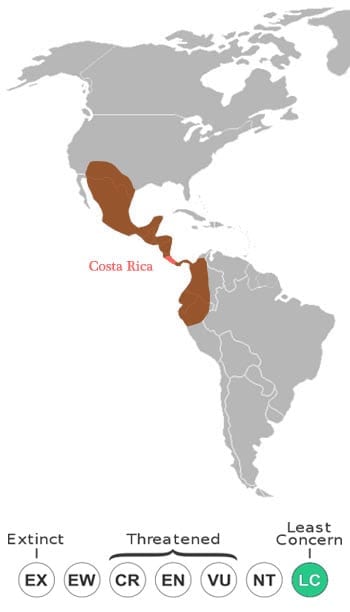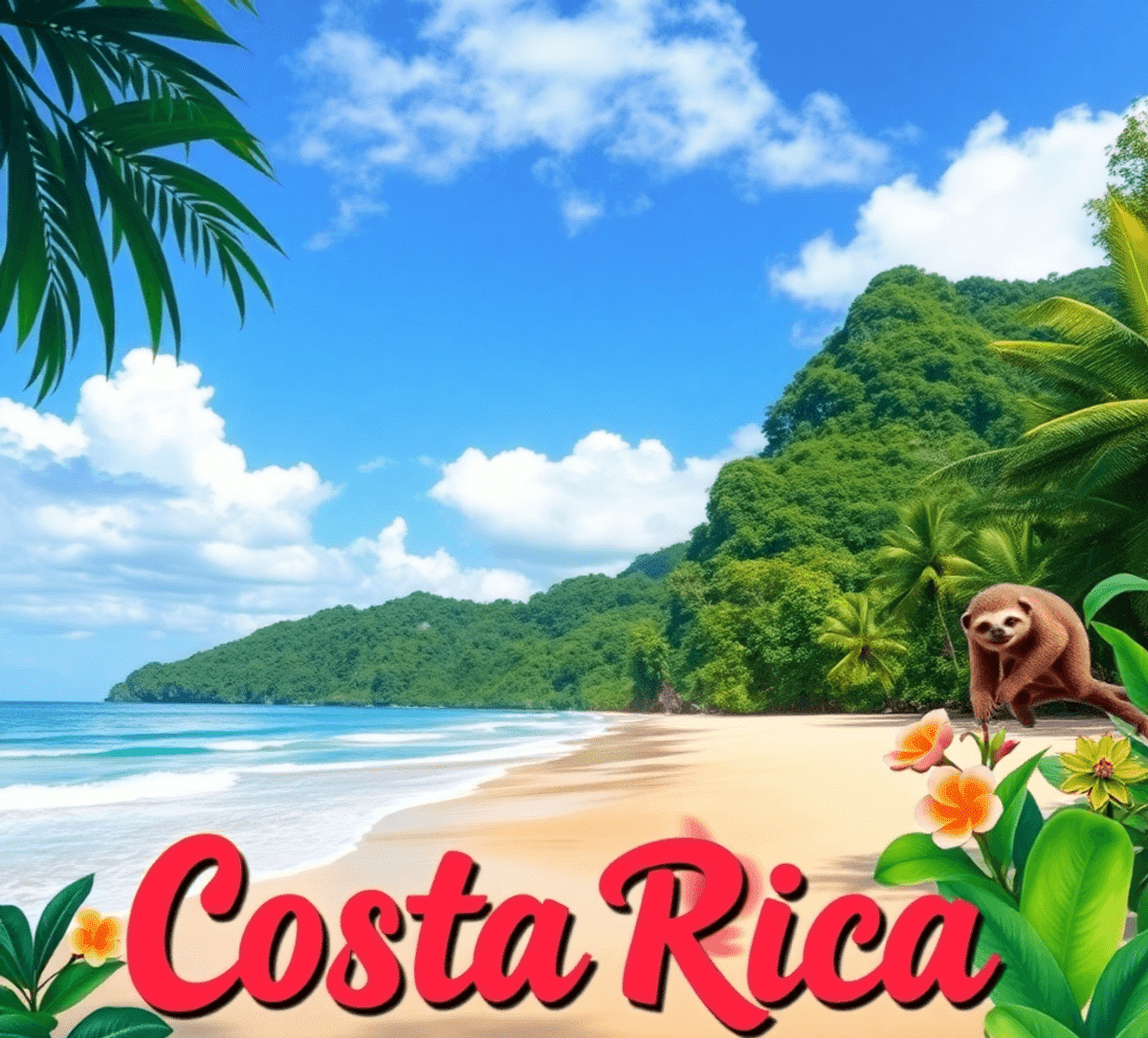Where to find the Coatimundi?
The White Nosed Coati, also known as Coatimundi or the local term, Pizote, is very well-known in Costa Rica. Coatis are exotic animals that inhabit forested areas in Central America. They are found through most of Costa Rica, especially near the coast. You will mostly see them in the rainforest, dry forest, or cloud forest. Coatis are common in the wetlands of the country, too. You are likely to spot Coatis climbing trees or walking in groups along the paths. People have come upon large groups ranging from 10-30 of Coatis! They are pretty friendly and usually watch humans while they are eating in hope of grabbing a bite themselves. Usually, you won’t find many adult males in these groups as they are put out at the age of two.
Characteristics and Behavior
A baby coatimundi is called a kit, and they tend to be born 3-5 at a time. Once they reach adulthood, a coati will weigh between 4 and 6 kilograms (8.8–13.2 lbs). They will grow to a length of 110 cm (43 inch), with males being noticeably larger than the females. The color of their fur is generally dark gray or brown with the tail having light and dark rings and long claws.
Besides the elongated snout with a white tip, they look very similar to raccoons in North America and also belong to the raccoon family. These long noses come in handy since they use it to turn over rocks and get into crevasses. The average Coatimundi in the wild will live to almost 10 years and domesticated ones can live nearly 16 years or more in rare cases, similar to that of a cat.
The Coati breeding season usually starts around rainy season because during this time, they will find a larger amount of food. Especially fruits. The rainy season is between January and March in some areas and between October and February in others.
Coatis are active both day and night. In large groups of pizotes, they protect each other and are a close-knit community. When they detect danger, they will all jump in the closest tree to escape harm. This is different for the solitary Coati: It will rear up on his hind legs to stand and fight. They are known to be violent fighters and defend what is theirs.
Favorite Foods and Predators
The Coati is an omnivore just like its cousin the raccoon, meaning it eats just about anything it can find. In the forest, they love to eat tarantulas, lizards, rodents, birds, eggs, fruits and berries. Many people view them as pests – especially in cities – as they also get into garbage cans and raid campsites. Sometimes due to habitat loss, but other times because they are curious little creatures that enjoy causing mischief and eat everything it can find.
Besides man killing the Coatis, some animals view them as a great snack. The list encompasses pretty much anything that eats meat, for example, large snakes, wildcats, wild dogs/coyotes, and eagles.
Coatimundis as exotic pets
We have touched upon it before and yes, there are cases of domesticated coatis. Some would even be born in captivity. People, like always, will try to domesticate an animal, and in doing so cause harm to the creature. Next to that, coatis can show aggressive behavior as they grow older. When a Coati reaches adulthood they can bite, scratch, tear apart furniture, so next to the fact that they should not be a pet for ethical reasons, they also make pretty bad ones. In fact, exotic pets are a big problem in Costa Rica overall and maintaining animal rights has proven to be a big problem in the past.
It is best to leave these guys alone in the wild, that is where they thrive and can be protected on a mass scale.














Follow Us